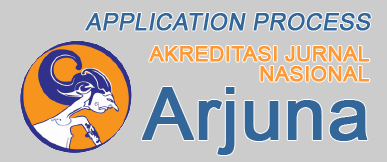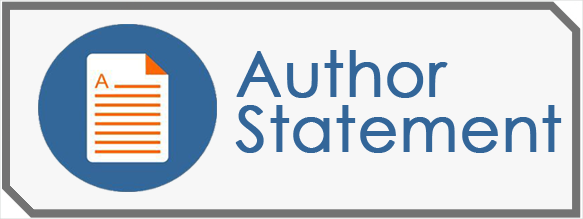Unveiling the Epoch: Exploring Pesticide Utilization and Trade Trends Globally and Regionally from 1990 to 2020
DOI:
https://doi.org/10.62394/scientia.v2i2.16Keywords:
pesticide usage trends, pesticide trade, global, regionalAbstract
Over the past three decades, a rapid increase in pesticide usage has played a central role in transforming the landscape of modern agriculture. The objective of this research is to conduct a comprehensive analysis of changes in pesticide usage from 1990 to 2020, emphasizing the complexity of global trends, environmental impacts, and pesticide trade dynamics. This study utilizes agri-environmental indicators and relies on the latest statistical data from FAOSTAT in 2022. The applied research method is a quantitative approach based on secondary data.The research findings indicate that global pesticide usage reached 2.7 million tons in 2020, with an average of 1.8 kg/ha. Although reaching a stable level, pesticide trade experienced a significant increase, particularly in the disinfectant category. Over the past three decades, there has been an approximately 50 percent increase in pesticide usage, especially in herbicides. Per capita analysis shows a relatively stable consumption rate, although there is an increase in pesticide usage per unit of agricultural land. Regional levels reveal significant disparities, with Asia as the largest contributor, Europe implementing strict policies, the Americas having the highest usage rates, Oceania experiencing low trade, and Africa applying low usage rates. Some countries, such as Saint Lucia, exhibit high pesticide application rates per unit of agricultural land, and this variation requires in-depth analysis to understand influencing factors. To mitigate negative impacts, international cooperation, the development of sustainable technologies, and a profound understanding of pesticide applications are necessary. Therefore, more effective and sustainable agricultural policies need to be designed to protect the environment and human health.
Downloads
References
Agusta, I. (2003). Teknik pengumpulan dan analisis data kualitatif. Pusat Penelitian Sosial Ekonomi. Litbang Pertanian, Bogor, 27(10), 179–188.
Alfiansyah, H., Ardikoesoema, N., & Samuel, J. (2023). Potensi degradasi lingkungan dampak eksistensi karbofuran di Indonesia. Jurnal Bisnis Kehutanan Dan Lingkungan, 1(1).
Benu, M. M. M., Adutae, A. S. J., & Mukkun, L. (2020). Dampak Residu Pestisida Terhadap Keanekaragaman Jamur Tanah Pada Lahan Sayuran. Jurnal Ilmu Tanah Dan Lingkungan, 22(2), 80–88.
Carvalho, F. P. (2006). Agriculture, pesticides, food security and food safety. Environmental Science & Policy, 9(7–8), 685–692.
Hertika, A. M. S., & Putra, R. B. D. S. (2019). Ekotoksikologi untuk Lingkungan Perairan. Universitas Brawijaya Press.
Lanslor, T. (2010). Revolusi Pertanian (Vol. 3). Cambridge Stanford Books.
Mudjiono, G. (2013). Pengelolaan Hama Terpadu: konsep, taktik, strategi, penyusunan program PHT, dan implementasinya. Universitas Brawijaya Press.
Qosim, A., Anies, A., & Sunoko, H. R. (2018). Model Distribusi Pestisida Tanaman Padi Untuk Lingkungan Yang Berkelanjutan Dengan Pendekatan Life Cycle Assessment di Kabupaten Pati. School of Postgraduate.
Sangadji, Suwandi S., Febriyani E. Supriatin, Iin Marliana, Afkar, Andi Paerah, and Firdaus Y. Dharta. 2022. “Metodologi Penelitian.” OSF Preprints. July 5. osf.io/ywemh
Sangadji, S. S. (2023). Management research methods. PROCURATIO: Jurnal Manajemen & Bisnis, 2(1), 43-44.
Sarosa, S. (2021). Analisis data penelitian kualitatif. Pt Kanisius.
Sidiq, U., Choiri, M., & Mujahidin, A. (2019). Metode penelitian kualitatif di bidang pendidikan. Journal of Chemical Information and Modeling, 53(9), 1–228.
Suluh, D. G., Telan, A. B., & Sadukh, J. J. P. (2021). Analisa Faktor Yang Mempengaruhi Kandungan Pestisida Pada Hasil Pertanian Di Wilayah Kabupaten Kupang Tahun 2019. Oehònis, 4(2), 1–10.
Wisnujati, N. S., Sangadji, S. S., & Sujarwo, S. (2023, July). Effectiveness of the use of agricultural inputs to reduce environmental pollution in Indonesia. In AIP Conference Proceedings (Vol. 2798, No. 1). AIP Publishing.
Wisnujatia, N. S., & Sangadji, S. S. (2021). Pengelolaan Penggunaan Pestisida dalam Mendukung Pembangunan Berkelanjutan di Indonesia. SEPA: Jurnal Sosial Ekonomi Pertanian dan Agribisnis, 18(1), 92-100.
Downloads
Published
How to Cite
Issue
Section
Most read articles by the same author(s)
- Vebri Dwi Permana, Markus Patiung, Nugrahini Susantinah Wisnujati, A Comprehensive Analysis of Indonesia's Coffee Exports to the Global Market from 1991 to 2021 , SCIENTIA: Journal of Multi Disciplinary Science: Vol. 3 No. 2 (2024): July-December
- Prama Hasta Aditya Maulana Sudrajat, Nugrahini Susantinah Wisnujati, Hary Sastryawanto, Exploring Consumer Preferences: Attribute Analysis and Satisfaction with Cavendish Bananas , SCIENTIA: Journal of Multi Disciplinary Science: Vol. 3 No. 2 (2024): July-December
- Bana Kardio, Achmadi Susilo, Nugrahini Susantinah Wisnujati, Assessing the Implementation of Social Security Program for Tobacco Farmers in Jember Regency , SCIENTIA: Journal of Multi Disciplinary Science: Vol. 3 No. 1 (2024): January - June




















